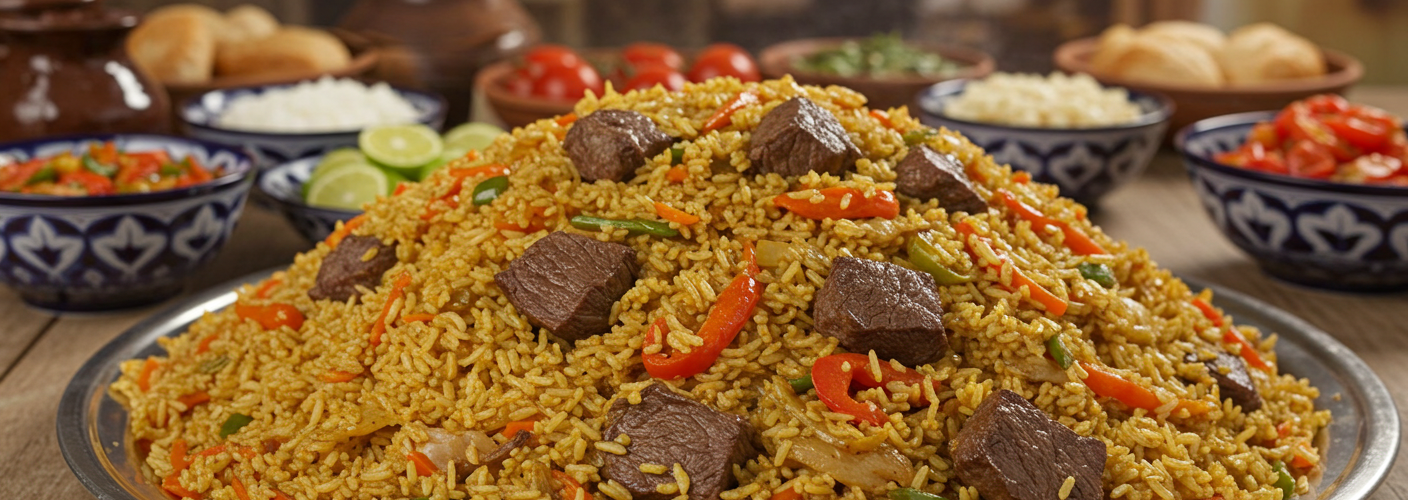When it comes to culinary traditions steeped in history and rich flavors, few dishes can compare to Plov—a beloved beef rice pilaf that has found its way into the hearts of food lovers around the world. Originating from Central Asia, particularly Uzbekistan, Plov is not just a meal; it’s a cultural experience that captures the essence of hospitality and communal dining.
At its core, Plov is a comforting dish made with tender pieces of beef, fragrant rice, and an array of aromatic spices and vegetables. The secret to a perfect Plov lies in the balance of ingredients and the cooking method, which has been passed down through generations. Traditionally, Plov is prepared in a large kazan, a heavy cast-iron pot, allowing the flavors to meld beautifully as they cook together.
Ingredients and Preparation
A standard recipe for beef Plov includes long-grain rice, typically basmati or jasmine, which is known for its ability to absorb flavors while maintaining a light and fluffy texture. The beef is usually cut into chunks and browned to develop rich flavors. Onions and carrots are staple ingredients, added to provide a natural sweetness that balances out the spices.
The cooking process begins with the sautéing of onions until they become translucent, followed by the addition of carrots, which are cut into thin strips or julienne. Once the vegetables soften, the beef is added, allowing it to sear lightly to lock in juices. Fragrant spices such as cumin, coriander, and black pepper are introduced for depth of flavor, and then rinsed rice is mixed in.
Water is added next, and the dish is simmered gently until the grains are fluffy and infused with the essences of meat and spices. The finishing touch often includes a sprinkle of fresh herbs such as parsley or cilantro, which brighten up the flavor palette and add a pop of color.
Cultural Significance
Plov is more than just food; it’s a staple at celebrations, gatherings, and family dinners in many Central Asian cultures. It’s often served at weddings, holidays, and special occasions, symbolizing abundance and generosity. The dish is served communal-style, with diners gathering around a large platter, sharing not just a meal but also stories, laughter, and connection.
Traditionally, the preparation of Plov is an event in itself, often bringing families and friends together for a day of cooking and camaraderie. The process can take several hours, with each individual contributing, creating a sense of teamwork and bonding. This communal spirit makes Plov a perfect choice for gatherings, inviting loved ones to partake in hearty servings of deliciousness.
Variations and Adaptations
While the classic beef Plov is timeless, variations abound based on regional preferences and available ingredients. Some variations incorporate lamb or chicken, while others might feature a mix of vegetables for a vegetarian-friendly take that retains all the essential flavors. Spices can also vary, reflecting the local palate—from mild to more robust combinations.
In conclusion, beef Plov is not only a delightful dish packed with flavor but also a representation of rich cultural heritage and togetherness. Whether you are new to this dish or looking to refine your cooking skills, preparing Plov is an opportunity to bring a taste of Central Asia into your kitchen, fostering connections over a shared meal that nourishes the body and soul. So gather your ingredients, invite friends, and immerse yourself in the wonderful world of Plov—the quintessential beef rice pilaf.




Add comment